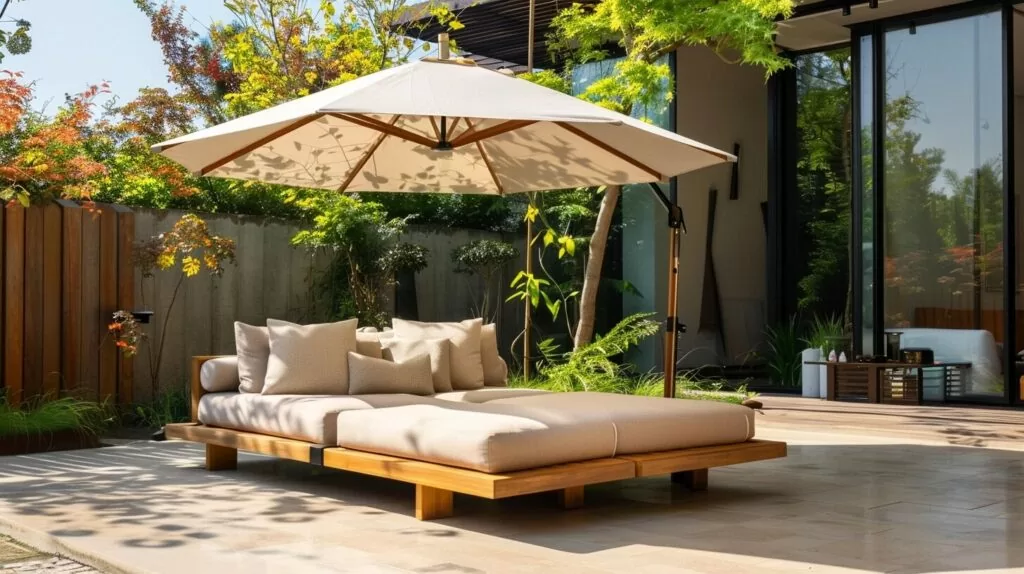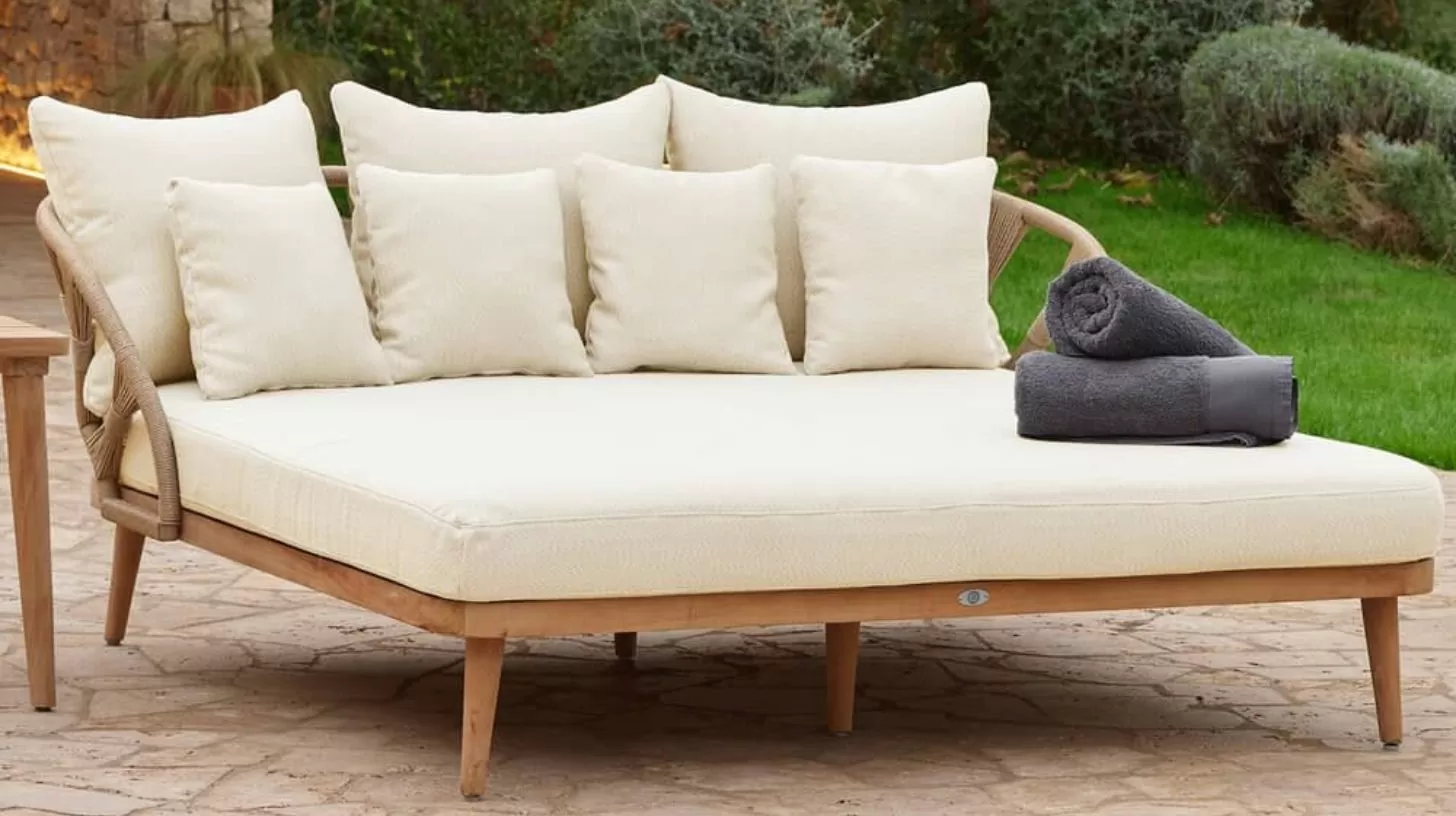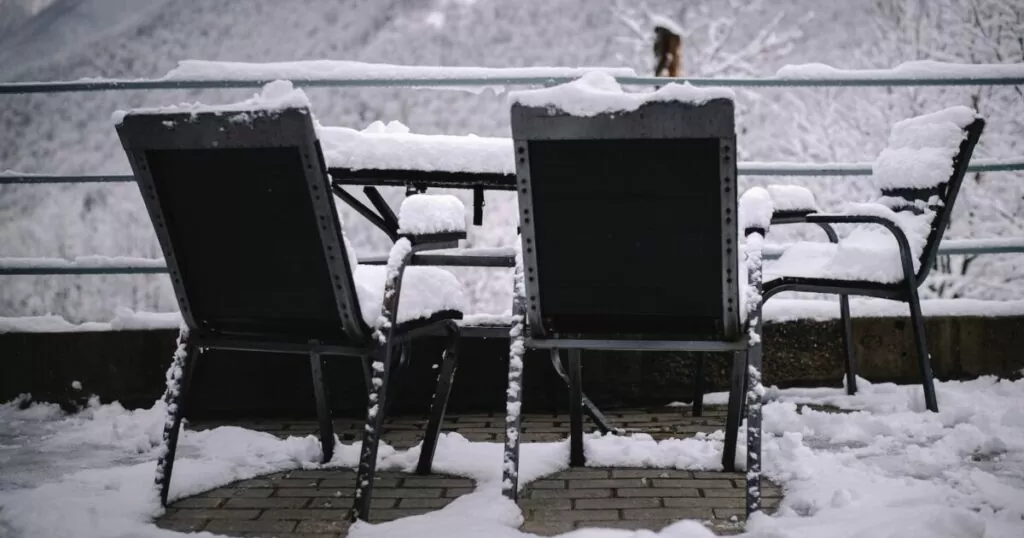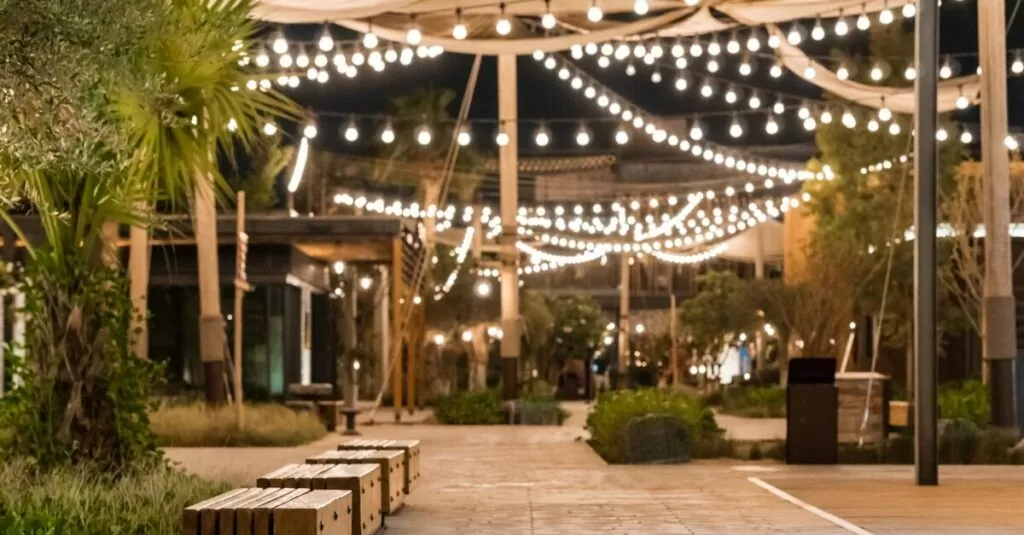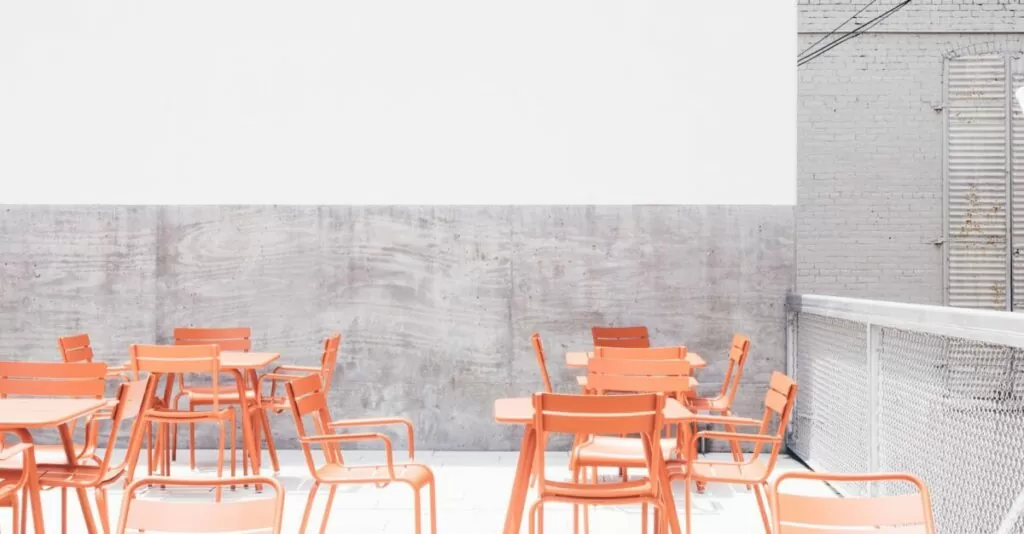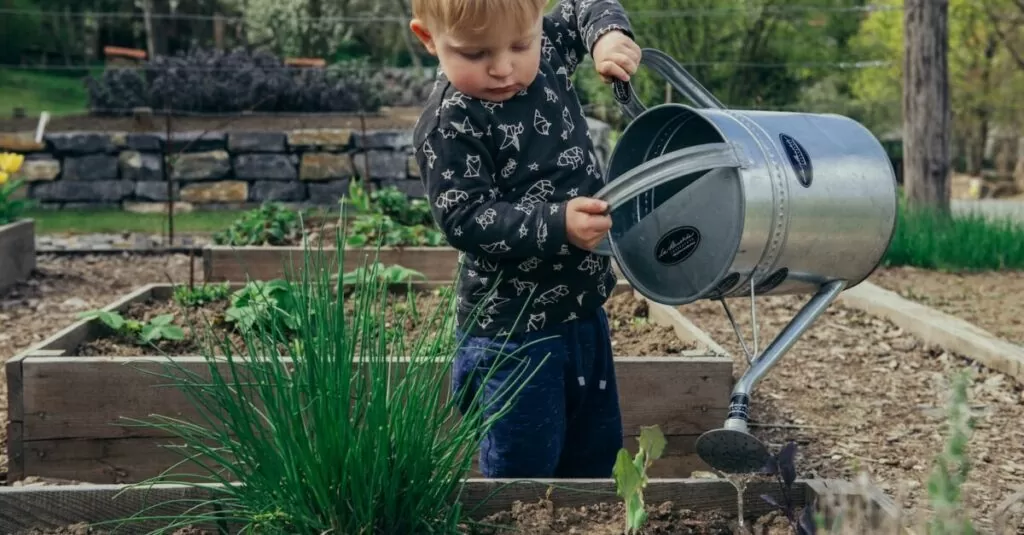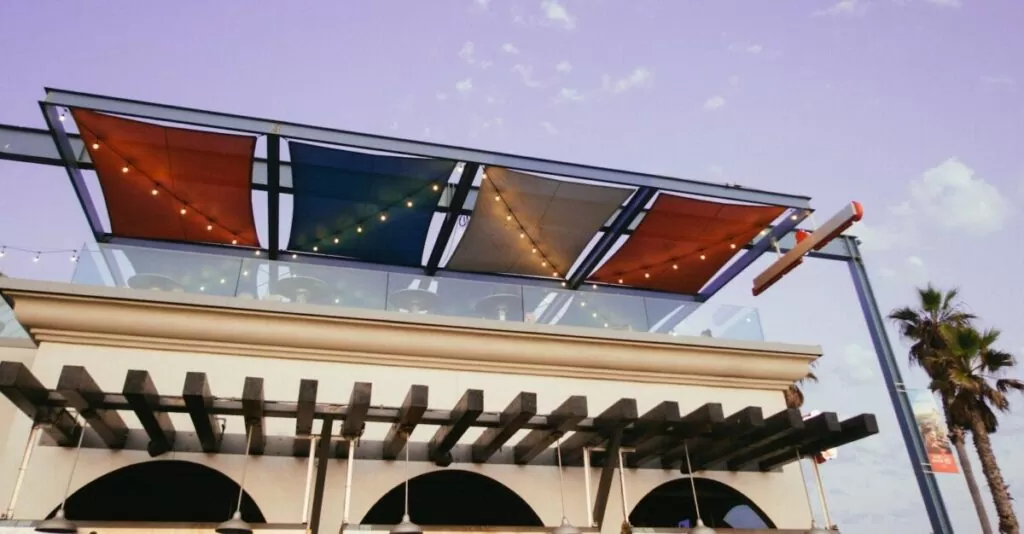Confession time. You ready? I’m not a professional, board-certified, card-carrying designer. And probably, you aren’t either. We’re just some fun-loving folk who can’t wait for some beautiful weather, so we can amble outside with our refreshing drinks and just relax. Right? But before we can relax on that amazing outdoor daybed, we have to know how to choose a great outdoor daybed.
And more specifically, we have to know how to choose daybeds made with the right materials!
So that’s our goal today: learning the ins and outs of outdoor daybed materials. I’m talking styles, durability, and maintenance. By the end of this article, you might not be a professional, board-certified, card-carrying designer – but you’ll at least be able to make decisions like one!
How Outdoor Daybed Materials Stack Up (4 = best)
| Material | Style & Flexibility | Durability | Maintenance |
|---|---|---|---|
| Wood | 4 | 2* | 2 |
| Metal | 2 | 3 | 3 |
| Wicker/Rattan | 3 | 1 | 1 |
| Resin | 1 | 4 | 4 |
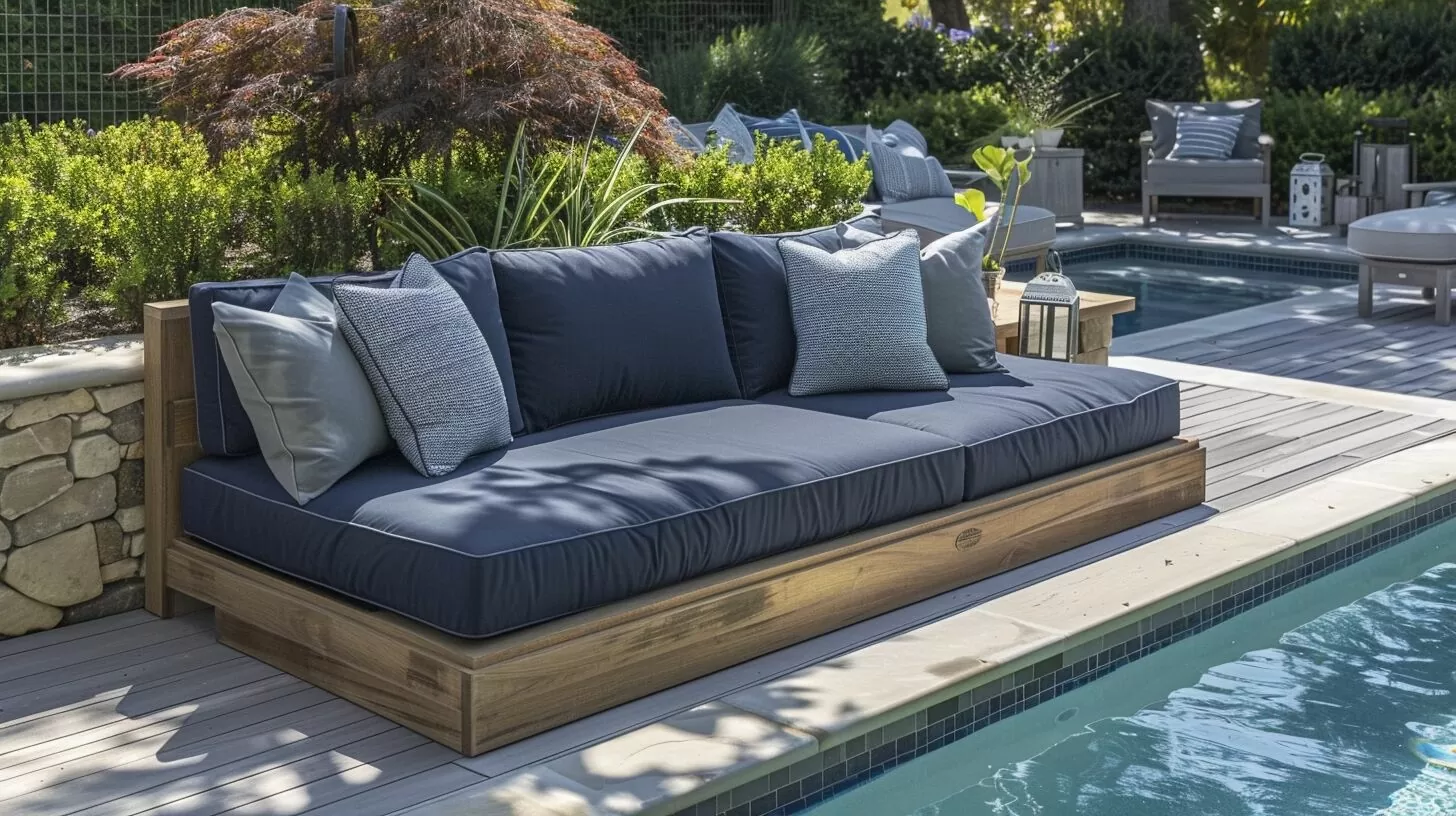
Wood: The Classic Choice
Pros:
- Natural beauty and warmth
- Durable, especially teak
- Weather-resistant (if properly treated)
Cons:
- Requires regular maintenance
- Can be expensive
- May crack or warp over time
When buying your outdoor daybed, I think we can all agree that wood is THE timeless choice for outdoor furniture (and daybeds are no exception). Natural. Beautiful. Flexible enough to go into any number of design styles… there’s just a lot to love, which is why you see it everywhere. But the type of wood you choose can make a MASSIVE difference, both for looks and durability.
TEAK
Let’s start with teak, which you’ll see all over your social feed. (What? Don’t tell me you don’t doom-scroll patio furniture beauty-shots.) That’s because teak daybeds are well-known not just because they’re so gorgeous and unique-looking, but because teak is durable and naturally-resistant to moisture, insects, and decay. It’s a bit pricey, but well worth the price-tag. This is a type of wood that will last a LONG time, even without a ton of annual maintenance.
ACACIA
You’ll also find acacia used a lot for outdoor furniture like daybeds. Still fairly durable and weather-resistant, though it does need a little more regular love to keep its luster through the seasons. And it’s a more affordable option.
EUCALYPTUS
Eucalyptus is among the top three types wood, as well. And it’s another budget-friendly that won’t let you down in terms of natural strength and resistance to rot and decay. Definitely worth exploring.
If you choose wood for your daybed, the key to keeping it at its best is regular maintenance. Regardless of which type of wood you choose, cleaning it with mild soap and water is usually all you need week-to-week. We’ve got a guide you should look into for preserving the wood itself. Trust me, I learned the hard way that you don’t want to leave a teak daybed exposed and untreated for a whole winter. Talk about not taking care of an investment!
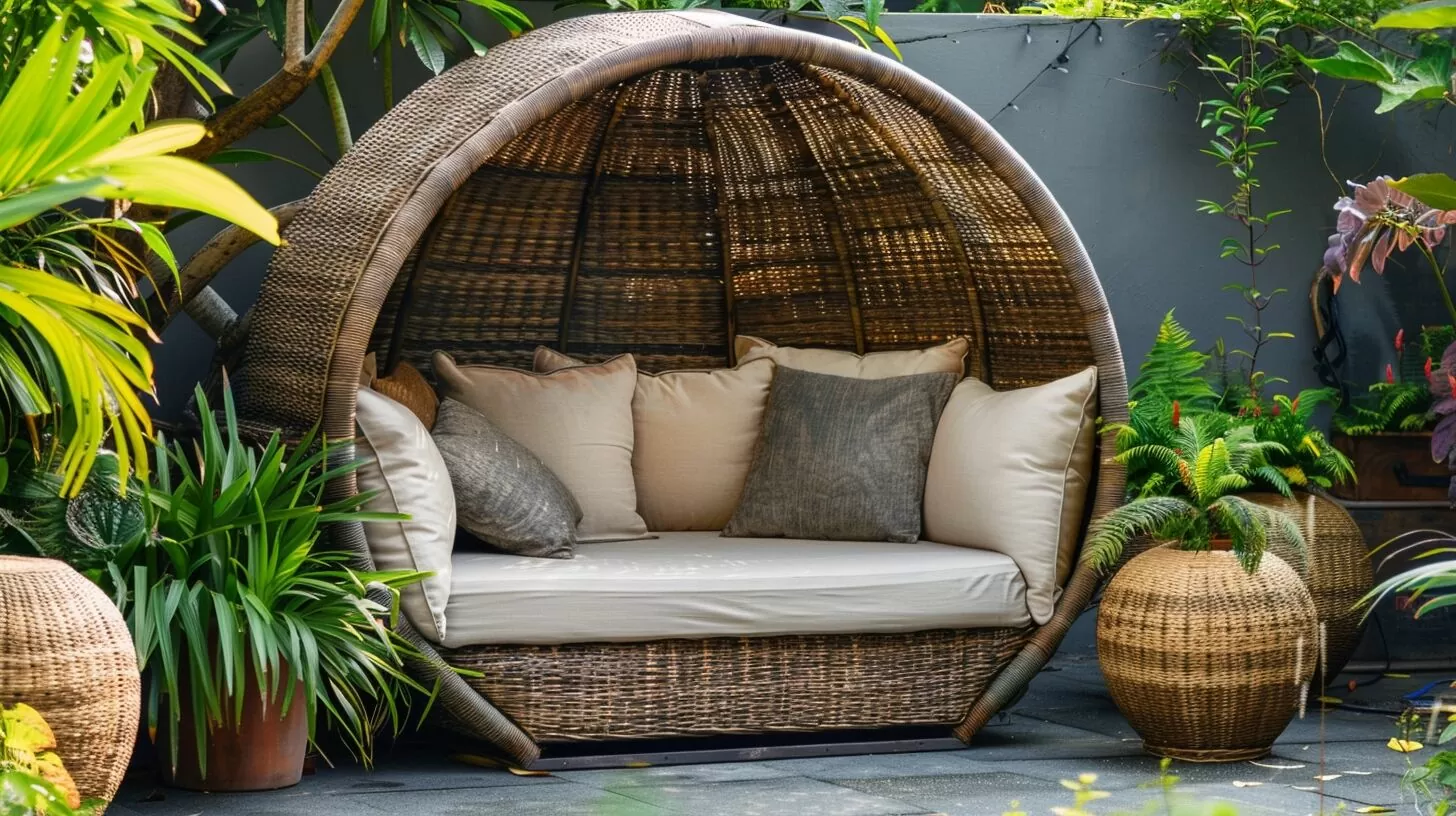
Wicker/Rattan: The Boho Chic Option
Pros:
- Lightweight
- Classic, bohemian look
- Relatively durable
Cons:
- Can unravel or break down over time
- Not ideal for rainy climates
- May require more frequent replacement
If you’re going for a more laid-back, bohemian vibe, a wicker or rattan daybed might be just the ticket. These natural materials are woven into intricate designs that add texture and visual interest to your outdoor space.
But there is a downside to the wicker/rattan choice. They’re not the most durable options you can find. They can unravel or break down over time, especially if exposed to harsh weather conditions. You really hate to invest in a piece of outdoor furniture, then have a particularly-rainy season leave you with a frayed, soggy mess!
To keep your wicker or rattan daybed in tip-top shape, store it indoors during the off-season and cover it when not in use. You can also apply a coat of varnish to protect it from the elements.
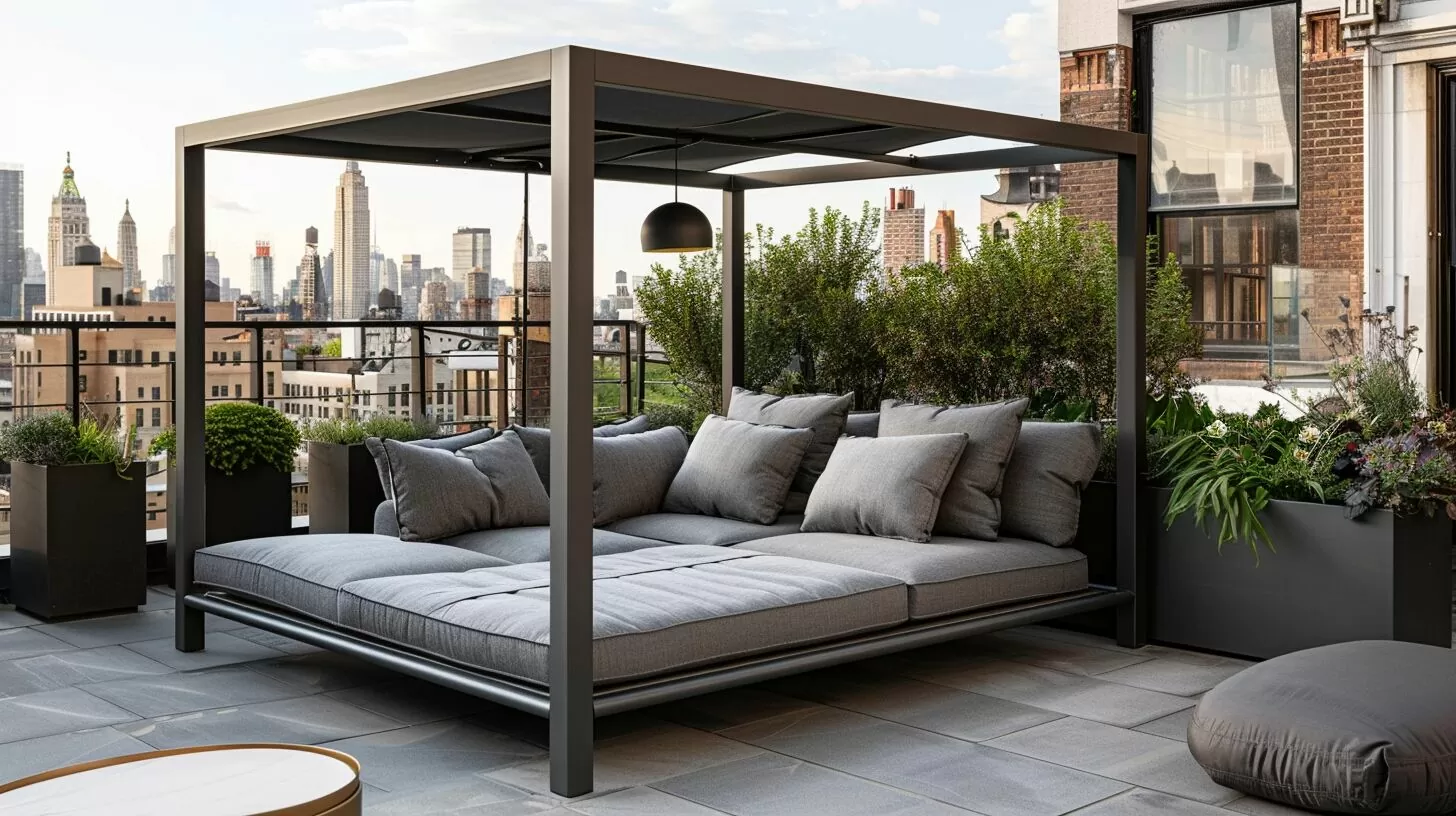
Metal: The Durable Choice
Pros:
- Very durable
- Can have intricate designs
- Resistant to insects and decay
Cons:
- Can rust (except aluminum)
- Gets hot in direct sunlight
- May require periodic painting or coating
What’s that you say? You’re really only interested in durability, but you don’t want to sacrifice in the looks category? Well, meet our metal daybed options, my friend. Much like wood choices, top outdoor metals come in a variety of great options. You can spend days looking through every single option, so I’ve pulled three of the best.
Aluminum: my personal favorite backyard hero. Cast aluminum daybeds are made in a wide range of colors and styles, so you can fit them into nearly any backyard aesthetic. Plus, it’s light-weight, rust-resistant, and incredibly low-maintenance. What’s not to love?
Oh, you would prefer something more traditional and classic? Well, sir, cast iron outdoor daybeds may be just for you. These good-looking pieces will last you a looooooong time, but you will have to watch out for rusting. I once had a client who insisted on a wrought iron daybed, despite my warnings about the maintenance involved. Sure enough, after a few months, the thing was covered in rust spots! Lesson learned: always listen to your friendly neighborhood outdoor furniture expert. Now, some people think the rust adds personality, but I’m not a fan. Fair warning: cast iron options are also heavy, so make sure you put it in the spot you want it to live for the long-haul.
Steel is another solid choice. Strong. Sturdy. But again, watch out for rusting on these guys. Stainless steel resists rust more readily than the regular stuff, but neither quite holds up to the weather quite like powder-coated aluminum. You can help fight rust with furniture covers during the wet and cold season, and consider bringing these pieces inside in the off-season if you live in a coastal environment.
To keep your metal daybed looking shiny and new, clean it regularly with mild soap and water, and apply a coat of rust-resistant paint if necessary.
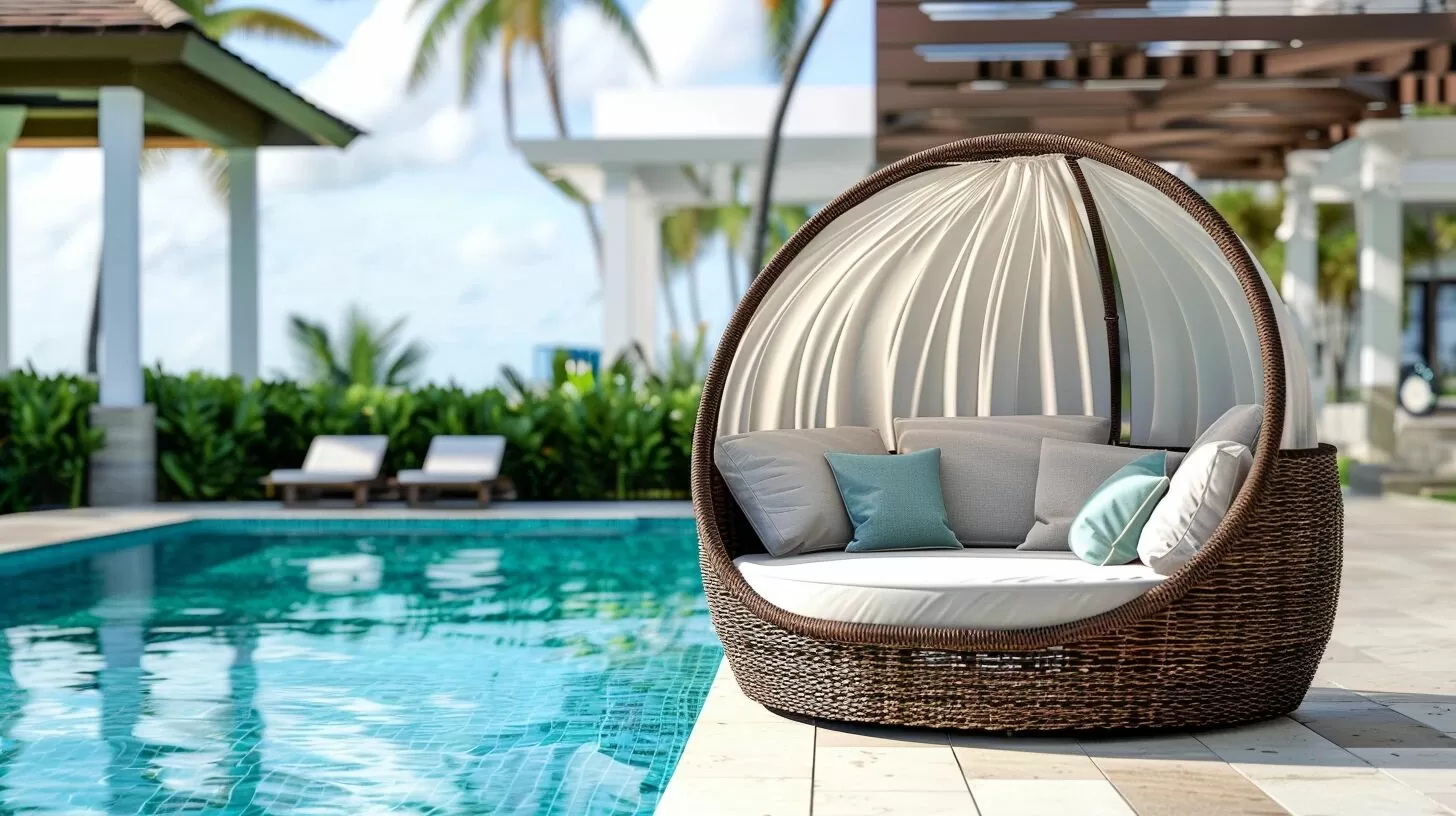
Resin: The Low-Maintenance Option
Pros:
- Weather-resistant
- Low-maintenance
- Lightweight
- Affordable
Cons:
- Can fade or crack over time
- May look “plasticky” or fake
- Limited design options compared to other materials
If you’re looking for a daybed material that’s virtually maintenance-free, resin wicker daybeds (or composite plastic) might be your best bet. These are made of a synthetic material that’s designed to withstand the elements, so you don’t have to worry about it cracking, peeling, or fading. Bonus: they also come in a pretty wide variety of styles and colors.
Cleaning is a snap. So if that’s your priority (or if you’ll regularly have kiddos climbing all over your outdoor furniture), you should consider these.
Unfortunately, resin and plastic composite outdoor furniture can look a bit plasticky and fake, so it might not be the best choice if you’re going for a natural, organic vibe. I once had a customer who wanted a resin daybed that looked like wood, and let’s just say it was a challenge to find one that didn’t look like a cheap imitation!
Fabric Considerations
Phew! We’ve walked through a lot of outdoor daybed materials, but we’re not really finished. No Insta-worthy outdoor design is finished without some splashes of color (not to mention some added comfort). So no matter what material you choose for your daybed frame, you’ll also need to think about the fabric for your cushions and pillows.
You’ll find a TON of options in this category, but here are the main questions you need to ask:
- Is it water-resistant?
- Is it UV-resistant?
- Is it mildew-resistant?
- Is it easy to clean?
With that quick questionnaire in mind, my favorite (and widely popular) outdoor fabric options include Sunbrella and Olefin. And don’t forget to bring your cushions and pillows inside when they’re not in use. Again, let’s keep those oh-so-comfy splashes of outdoor color looking vibrant and new for as long as possible!
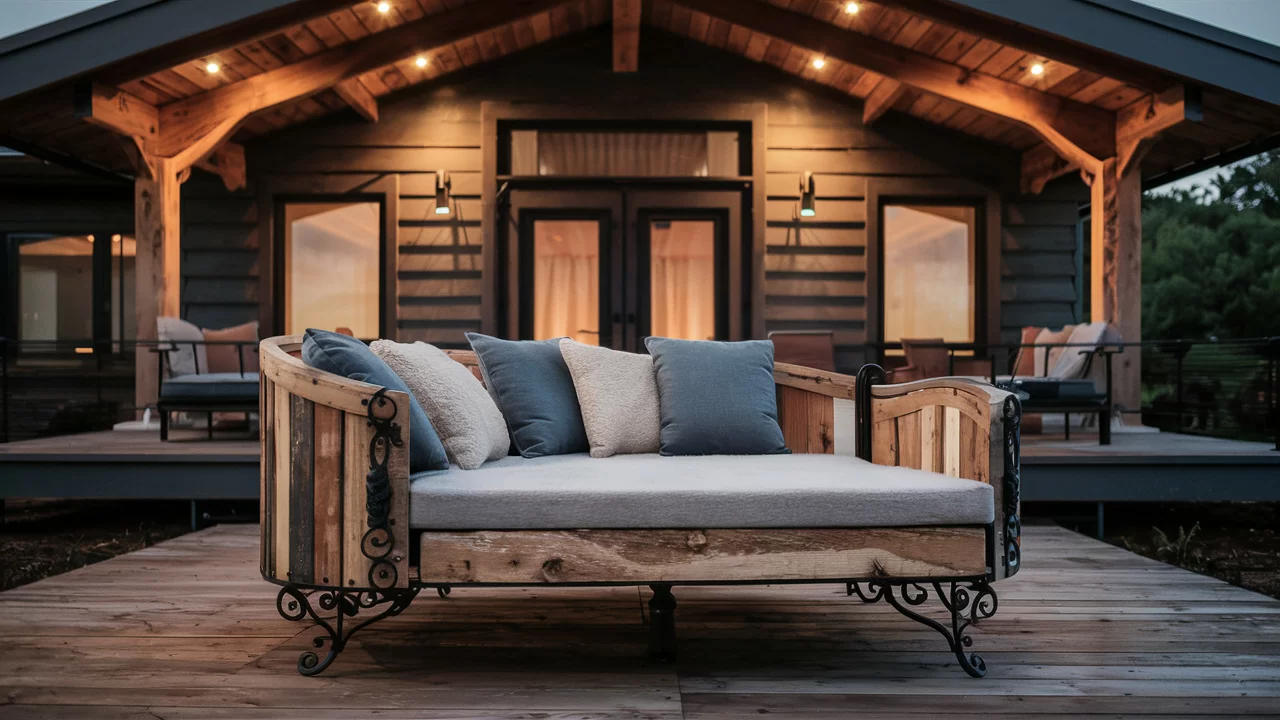
Maintenance and Care
Maintaining your outdoor furniture properly is a deep discussion worthy of its own blog (oh, wait, we already have one here). And no matter what material you choose for your outdoor daybed, you want to keep it looking ‘Day One Gorgeous’ for years and years. I know I like to feel like I’m walking into a newly-curated space every time I step into my backyard. So here are some general tips:
- Clean your daybed regularly with mild soap and water.
- Apply any necessary protective coating (this is a good topic to study in the Maintenance blog above).
- Cover your daybed when not in use, especially during inclement weather.
- Store cushions and pillows indoors when not in use.
- Follow the manufacturer’s care instructions for your specific daybed material.
Trust me, a little outdoor furniture maintenance can go a long way. You don’t want to be the person who tosses the care guidelines aside… then walks outside one day to what can best be described as a warzone!
Choosing the Right Daybed for You
So now you might be asking yourself, “how do I choose the best option for me?” Well, first off, go back up to the Outdoor Daybed Buyer’s Guide link earlier in this article (or on the right side of this article). And really, much of this decision comes down to your personal preferences and lifestyle. But you might want to consider a few other thing while you’re at it.
Where do you live? And how will your local climate and weather affect your daybed?
How much maintenance are you willing to do?
Do you have a specific style or aesthetic? This might make your decision by itself!
Don’t be afraid to mix and match materials. Finding your own combination of materials, colors, and accessories is half the fun, and guarantees you get your own unique space for chilling and enjoying a beautiful day or sunset.
The Krabi Daybed by Skyline Design, available at PatioProductions.com
Before You Go
Alright, we got through the whole guide! I know that was a lot of information, but I wanted to make sure you were armed with more than enough context and tips to find your perfect outdoor daybed material.
Plus, if you’re still unsure, the good people at Patio Productions are just a phone call away. And if you’re in the San Diego area, stop by our showroom. We’d love to talk shop with you while we’re … well … in our shop!
We hope to hear from you soon. And go live some life outdoors!

Eben Jol is a creative media specialist with over 9 years of experience creating helpful content for outdoor brands. In that time he has learned the ins and outs of the outdoor industry and has a keen understanding of what topics customers and information seekers need to know when they are planning and furnishing their outdoor space. He has gathered data and reported on industry insights for organizations such as the ICFA, and in his spare time, loves relaxing in his own backyard (and the great outdoors at large) with his wife and 3 kids.

